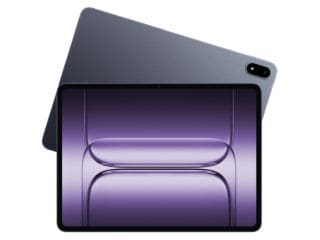- Home
- Science
- Science Features
- Ever Wonder What's on the Menu for Astronauts?
Ever Wonder What's on the Menu for Astronauts?

Photo Credit: Illustration for The Washington Post by Jonathan Bartlett
Neil Armstrong may have taken that first small step for man onto the moon, but it was John Glenn who took the first slurp of applesauce for humankind.
Until he ate while orbiting Earth in 1962, scientists at NASA weren't sure humans could swallow and digest food while in space. Luckily, he chowed down in zero gravity with no trouble. Today's astronauts sometimes spend months at a time living in the International Space Station (ISS), so they'd get pretty hungry without a few snacks!
Of course, while the human body is happy to take in a meal while hovering 250 miles above Earth, the process of cooking and eating food isn't exactly the same as it is back home. That's why NASA scientists are still working hard to perfect astronaut menus. A healthy diet is even more crucial for space farers than it is here on the surface, because spending time in space makes your body start to lose bone and muscle mass. NASA has to figure out how to send food up in a rocket, store it for as long as possible and make sure it delivers a perfect balance of nutrients - and it has to keep astronauts from getting bored, too!
"Imagine trying to eat the same food for every meal for six months. You may get tired of the food and eat less than you need to maintain weight, health and performance. That's why we have to make sure there's a large variety of healthy food available for the astronauts to make choices," says F. Ryan Dowdy, ISS food system manager at NASA's Johnson Space Center in Houston, Texas.
Astronauts have about 200 food items to pick from. According to Dowdy, a lot of the options are surprisingly similar to meals we eat on Earth.
"Whether it's macaroni and cheese or chocolate pudding cake, it's important for the astronauts when eating to be reminded of home," he says. "Food can be an important psychological comfort in the stressful environment of space."
It's the preparation that's unique: Food often has to sit in storage for six months before it even goes into space - and last for weeks or months at a time once it's up there - so NASA designs everything with a shelf life of at least two years. Macaroni and cheese is freeze-dried (meaning that most of the moisture is removed, which makes it safe to store at room temperature), and astronauts add hot water to it on the space station. Chocolate pudding cake is preserved similarly to canned food, but NASA puts it in a flexible pouch so it takes up less space.
Some Earth foods are already perfectly fit for zero-gravity consumption. Tortillas, for example, are a great alternative to bread - they last a long time in storage, and they don't form crumbs that float around and get caught in important parts of the ship. Astronauts can also request small quantities of fresh fruits and vegetables whenever NASA sends supplies up, but for the most part, they're eating various combinations of super-durable stored foods.
As NASA looks to the future of spaceflight - with missions to Mars, and perhaps even farther - the agency has to design even more durable food. It takes about eight months to get to Mars, and astronauts will have to bring food for the journey home, too. Dowdy says NASA is working to extend the shelf life of its foods to around five years, but experiments in space farming are also part of the plan.
Astronauts on the ISS are able to farm plants such as lettuce in small quantities, but Dowdy says it will take some time before this is a sustainable source of calories. He thinks 3D printed treats may also be on the menu someday soon. One thing is for sure: It's going to take a lot of scientific know-how to feed the space explorers of the future.
© The Washington Post 2018
For the latest tech news and reviews, follow Gadgets 360 on X, Facebook, WhatsApp, Threads and Google News. For the latest videos on gadgets and tech, subscribe to our YouTube channel. If you want to know everything about top influencers, follow our in-house Who'sThat360 on Instagram and YouTube.
Related Stories
- Samsung Galaxy Unpacked 2025
- ChatGPT
- Redmi Note 14 Pro+
- iPhone 16
- Apple Vision Pro
- Oneplus 12
- OnePlus Nord CE 3 Lite 5G
- iPhone 13
- Xiaomi 14 Pro
- Oppo Find N3
- Tecno Spark Go (2023)
- Realme V30
- Best Phones Under 25000
- Samsung Galaxy S24 Series
- Cryptocurrency
- iQoo 12
- Samsung Galaxy S24 Ultra
- Giottus
- Samsung Galaxy Z Flip 5
- Apple 'Scary Fast'
- Housefull 5
- GoPro Hero 12 Black Review
- Invincible Season 2
- JioGlass
- HD Ready TV
- Laptop Under 50000
- Smartwatch Under 10000
- Latest Mobile Phones
- Compare Phones
- Vivo Y300 GT
- Samsung Galaxy F56 5G
- Realme C75 5G
- Lava Yuva Star 2
- Vivo Y19 5G
- iQOO Z10 Turbo Pro
- iQOO Z10 Turbo
- CMF by Nothing Phone 2 Pro
- Alienware 16X Aurora
- Alienware 16 Aurora
- Amazon Amazon Kindle Paperwhite (12th Gen)
- Lenovo Legion Y700 4th Gen
- boAt Storm Infinity Plus
- Moto Watch Fit
- Xiaomi QLED TV FX Pro (55-inch)
- Xiaomi QLED TV FX Pro
- Asus ROG Ally
- Nintendo Switch Lite
- Toshiba 1.8 Ton 5 Star Inverter Split AC (RAS-24TKCV5G-INZ / RAS-24TACV5G-INZ)
- Toshiba 1.5 Ton 5 Star Inverter Split AC (RAS-18PKCV2G-IN / RAS-18PACV2G-IN)

















